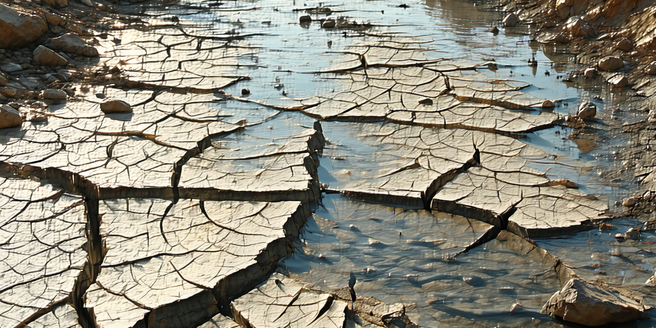
Understanding the Link Between Global Warming and Water Scarcity
Global warming significantly affects water availability, leading to scarcity issues. Rising temperatures increase evaporation rates, reducing water levels in rivers and lakes. This exacerbates droughts and limits water supply for agriculture, domestic use, and industry. Moreover, the increasing frequency of extreme weather events disrupts water management systems. Climate change alters precipitation patterns, causing some regions to receive less rainfall, intensifying water scarcity. Additionally, higher temperatures can lead to early snowmelt, reducing the water supply when it’s most needed during hotter months. As freshwater sources dwindle, communities face challenges in accessing clean drinking water, impacting health and livelihoods. Understanding these linkages is crucial in developing strategies to adapt and mitigate water scarcity as a result of global warming.
The Effects of Melting Ice Caps on Sea Levels
Melting ice caps, a direct consequence of global warming, contribute significantly to rising sea levels. The Greenland and Antarctic ice sheets hold vast amounts of frozen freshwater. As global temperatures rise, these ice masses melt at accelerating rates, releasing water into the oceans. This process also affects global ocean currents, which can have far-reaching impacts on climate patterns. The increase in sea levels poses a threat to coastal cities and ecosystems, leading to erosion, habitat loss, and increased flooding. Low-lying areas and small island nations are particularly vulnerable, facing risks of submersion and displacement. Understanding this phenomenon’s connection to global warming is key in preparing for and mitigating the impacts of sea-level rise.
How Altered Rainfall Patterns Influence Freshwater Availability
Global warming disrupts regular rainfall patterns, which has profound effects on freshwater availability. Some areas experience increased rainfall, leading to floods, while others face drought and drying water sources. These changes affect river flows and reservoir levels, creating challenges in managing water supply for agriculture, industry, and municipalities. Consequently, there is a growing need for innovative water conservation techniques and technologies. In many regions, shifts in the timing of rainfall can lead to mismatches with growing seasons, impacting agricultural productivity. As a result, farmers are forced to adapt their planting and harvesting schedules. The unpredictability of precipitation patterns due to climate change complicates water resource management, highlighting the need for adaptive strategies to ensure reliable freshwater access.
Droughts and Their Growing Frequency Due to Climate Change
Climate change is increasing the frequency and severity of droughts worldwide. Higher global temperatures contribute to accelerated evaporation rates and soil moisture loss, exacerbating drought conditions. Regions already prone to aridity are experiencing worsening water deficits, impacting agriculture, drinking water supplies, and ecosystems. Innovative technologies in water conservation and management are becoming essential tools in combatting these challenges. Water management strategies must be revised to cope with these new realities. As droughts become more common, communities are facing increased food insecurity and economic stress. Preparing for and adapting to these changes involves understanding the underlying connections between climate dynamics and drought occurrences. By doing so, we can build resilience against the growing threats posed by prolonged dry periods.
Strategies for Mitigating Global Warming’s Impact on Water Supplies
There are several strategies to mitigate the effects of global warming on water supplies. Sustainable water management practices, such as rainwater harvesting and improved irrigation techniques, can enhance water efficiency. Protecting natural ecosystems, like wetlands, aids in maintaining water quality and availability. Investing in infrastructure to store and distribute water more effectively is crucial for resilience against climate-induced changes. Innovations in water conservation technology also play a critical role in preserving our natural resources. Public awareness and education campaigns can further promote water-saving practices among individuals and communities. Additionally, adopting policies that reduce greenhouse gas emissions and promoting the use of renewable energy can mitigate global warming’s effects. Collaboration between governments, communities, and organizations is essential to ensure sustainable water resources in a warming world.
